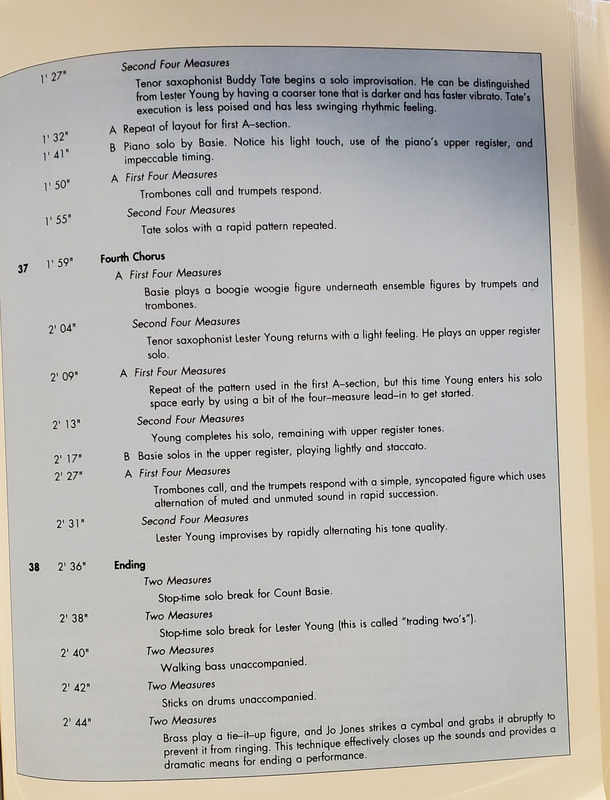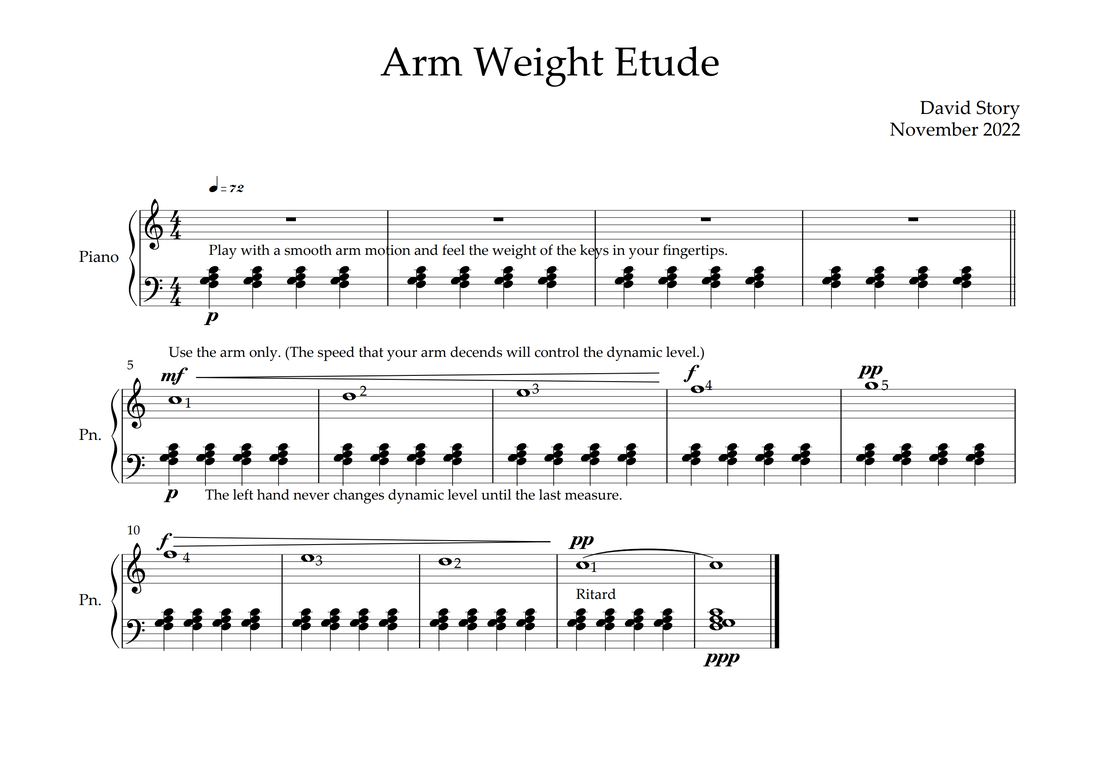|
Super video demonstration but...
Let's consider the assumptions he is making about you the student/listener.
What is my job? I prepare students to understand and execute what he is talking about. The first thing we will do is assess your situation and then we'll draw up a logical plan.
Call me, David BTW: in 2017, I studied with Peter Martin in Rome Italy at the ROMA Jazz Workshop. I was in Rome studying jazz drumming with Greg Hutchinson. Greg played in Ray Brown’s last group. Peter is a great guy and a very skilled musician. When I grow up, I want to play piano like him. Updated 2024
0 Comments
Tonight, in concert band we will sightreading 8 to 10 new pieces of music that arrived last night and this morning. I am following this protocol to be ready.
1. I immediately printed the music. 2. I created a new YouTube playlist of the pieces. 3. I studied the scores while listening to the musical recordings. I made note of the tricky bits. I did not necessarily listen all the way through, just enough to get a sense of the part. 4. I put aside all the music I can easily sightread. It will be read for the first time tonight. 5. I have made note of the tricky bits in the three remaining pieces: one measure in one piece, one section in another, and then put the third on the music rack for immediate attention later this morning. 6. I wrote in the stickings on the two easier pieces in the trickly passages. 7. I am preparing to practice the one tricky piece with my pencil, eraser, recording, drumkit, music ready at hand. I will let you know how it turns out tonight. David Creating a "roadmap" gives you a visual representation of the form or structure of a performance. You will discover the: who, what, when, and how much in the recording. This is valuable information. You will learn to count, recognize the instrumentation and more. You will begin to develop an awareness of how musicians organize their performances and recordings. First Steps. 1. Pick a favorite piece 2. With a pop song listen for the following sections and their order; introduction, verse, chorus, bridge, ending (tag). With a jazz piece, notice how many times they play the "head" or main melody and then note the order of solos. How many times do they play the head after the solos? Second Steps. 1. Make a note on your "map" of dynamics. 2. In a jazz piece, count how many times each musician solos on the form. 3. Do they trade "fours" with the drummer? If you are unsure what this means, click here. Third Step. 1. Make a note on your "map" of anything interesting you pick up or hear. Have fun. David Here is a more detailed roadmap that includes a guide to my drum part.
This etude will help you practice the correct finger patterns for Royal Conservatory Level 1 and 2 techniques. I would play them slooooooowly; hands separately. A metronome is recommended.
Things to notice: 1. The accents 2. The slurs 3. The dynamics 4. The fingering In the video I demonstrate the hand motions required. Have fun. Sight singing is fun when we sing along with something great like the fifth symphony of Beethoven. We might call this tympani karaoke.
Trivia question: What does C jam blues and the Tympani part for Beethoven's 5th symphony have in common? This etude will help you to create a beautiful singing line in pieces with slow moving melodies. None of the notes are played with the fingers going up and down in the usual way, it is played all with the arm.
Harmonizing chords using the strict rules of chorale writing (SATB) is a time-honored way to get started with harmony. I'd be happy to help you, just call me. Rules 1. Spacing between SA and AT cannot exceed an octave 2. Range of SATB should be reviewed before starting. 3. Double the root, but never in consecutive voices. 4. No voice crossing within a measure. 5. All chords must have a 3rd. 6. Common tones repeat, most of the time. Computer realization of the exercises. How amateurs might up their game in rehearsals Jazz jamming is fun. Sight reading tunes each week is ok, but it is often difficult for the ensemble to improve because there will not be enough week to week repetition. So, I’m putting forth these suggestions.
The idea is that with weekly repetition, improvements can be heard. Bonus: folks will know what to practice between “jams” while flipping over two pieces each week will keep it fresh. Have fun. Look what I found tucked away. You can hear examples in the Bill Evans YouTube video below. |
You've got to learn your instrument. Then, you practice, practice, practice. And then, when you finally get up there on the bandstand, forget all that and just wail. AuthorI'm a professional pianist and music educator in West Toronto Ontario. I'm also a devoted percussionist and drum teacher. Categories
All
|
















 RSS Feed
RSS Feed